Explore Marine Life at UNE’s Hands-On Ornamental Husbandry Lab
The Ornamental Husbandry Lab (OHL), located on UNE’s Biddeford Campus in the Girard Marine Science Center (GMSC), offers immersive and hands-on experiences with aquatic systems and saltwater species. The lab contains various invertebrate and vertebrate species, from corals to clownfish, all of which have their own unique husbandry needs. With multiple recirculating aquaculture systems (RAS) and independent aquaria, plus an experienced team of mentors, the OHL provides both the facilities and expertise to enhance hands-on classroom activities and a diverse array of research and husbandry opportunities for faculty and students.
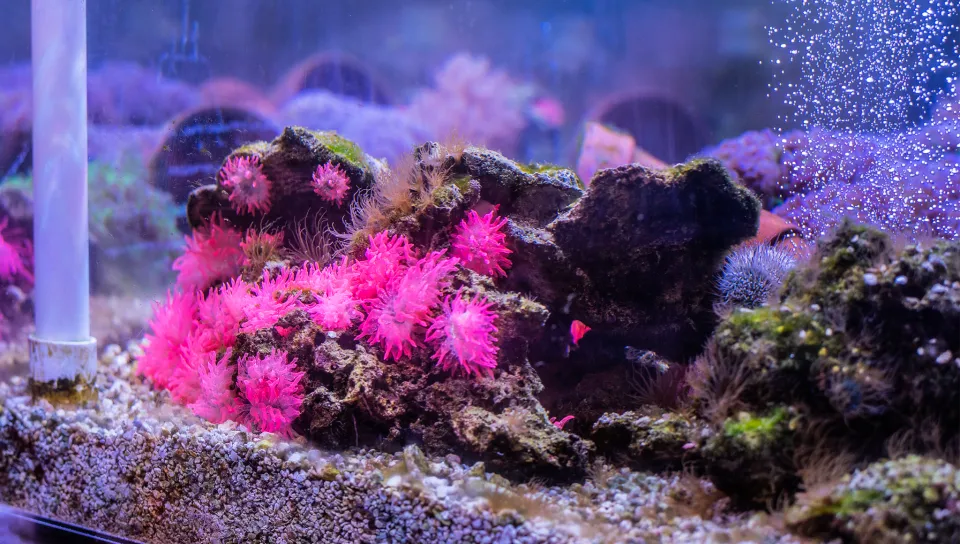
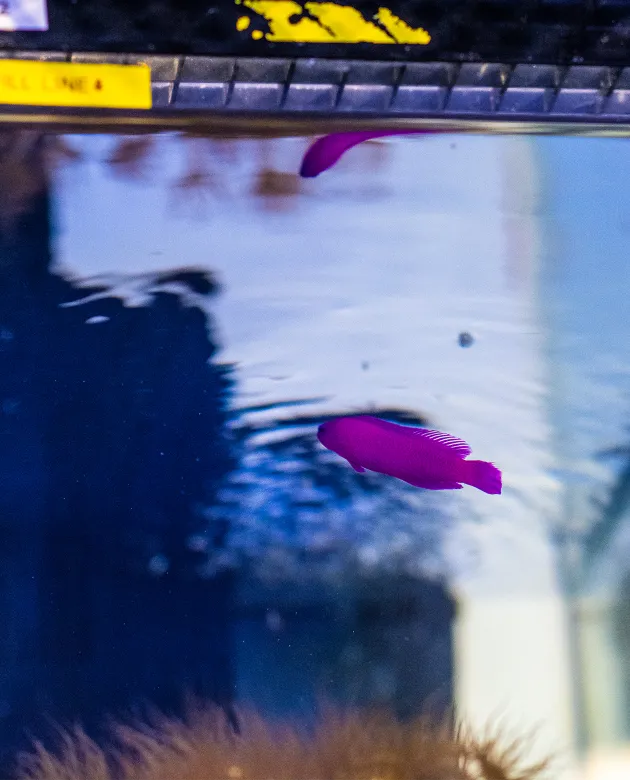
Why Marine Systems?
Marine aquaculture systems offer unique educational and research opportunities that prepare students for real-world applications.
- Diverse Species Management: Experience with both invertebrate and vertebrate marine species
- Complex System Operations: Hands-on training with recirculating aquaculture systems that mirrors industry standards
- Specific Protocols: Learn individualized care requirements for different marine organisms
- Water Quality Expertise: Learn proper water parameter monitoring and maintenance
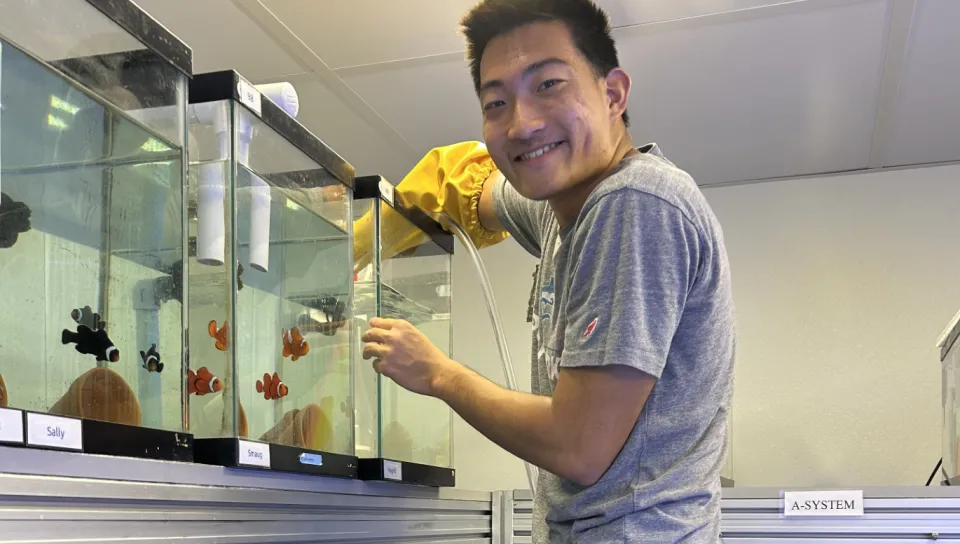
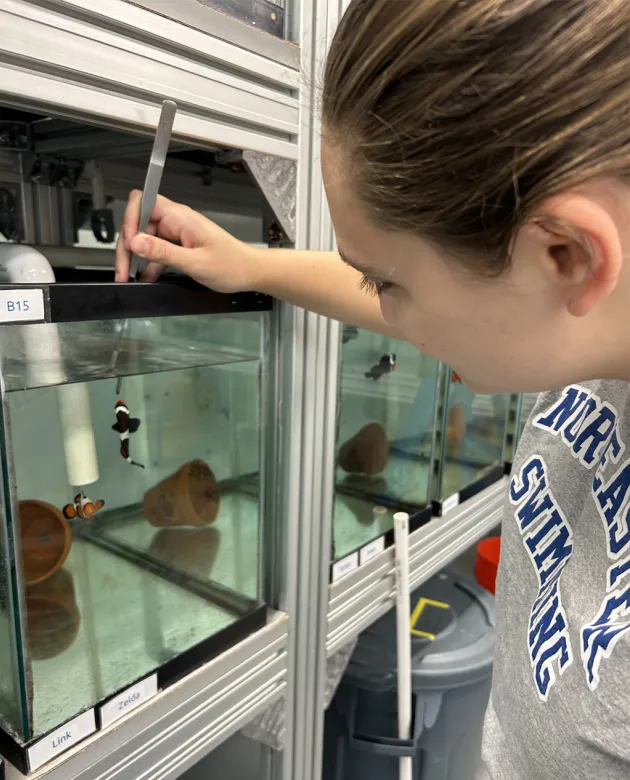
Using the OHL in the Classroom and for Research
The OHL plays an important role in Marine Science education and aquaculture standards, including system maintenance, water quality management, species husbandry, and marine ecology. The facility offers opportunities to learn about these topics as well as saltwater system management techniques and proper facility operations. The lab is utilized in multiple classes and research projects across the University, involving:
- System Maintenance and Operations
- Water Quality Parameter Testing
- Species-Specific Feeding Protocols
- Health Care Assessment and Monitoring
- Coral Care
- Invertebrate Husbandry Methods
- Recirculating System Management
- Aquaculture Technology Applications
OHL Species Collection
Vertebrate Species
- Common Clownfish (Amphiprion ocellaris)
- Orange Clownfish (Amphiprion percula)
- Saddleback Clownfish (Amphiprion polymnus)
- Orchid Dottyback (Pseudochromis fridmani)
- Lemon Damselfish (Pomacentrus moluccensis)
- King Demoiselle (Chrysiptera rex)
Invertebrate Species
- Kenya Tree Coral (Capnella sp.)
- Leather Coral (Sinularia dura/brassica)
- Frogspawn Coral (Fimbriaphyllia divisa)
- Donut Coral (Acanthophyllia deshayesiana)
- Hammer Coral (Euphyllia ancora)
- Bubble Tip Anemone (Entacmaea quadricolor)
- Emerald Crab (Mithraculus sculptus)
- Mini Brittle Starfish (Ophioderma sp)
- Rock Boring Urchin (Echinometra lucunter)
- Pincushion Sea Urchin (Lytechinus variegatus)
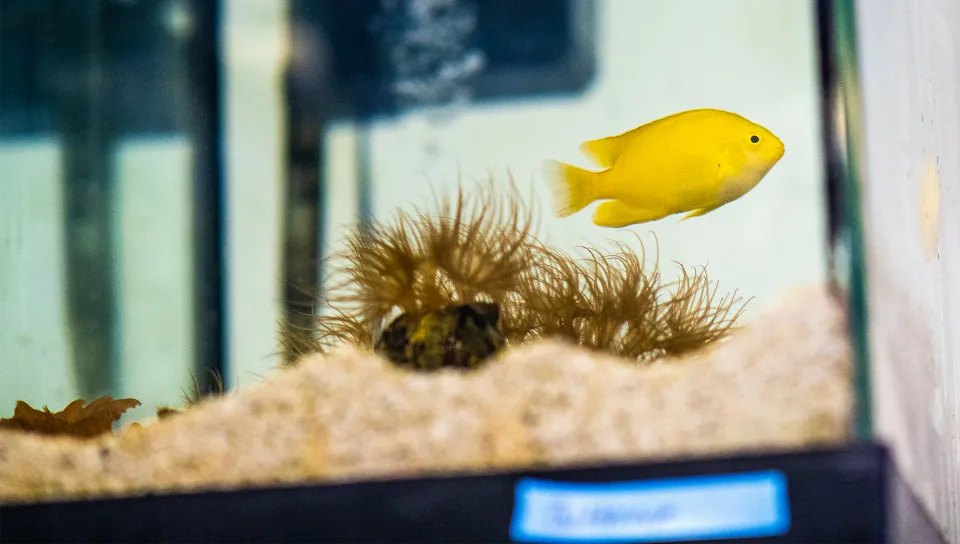
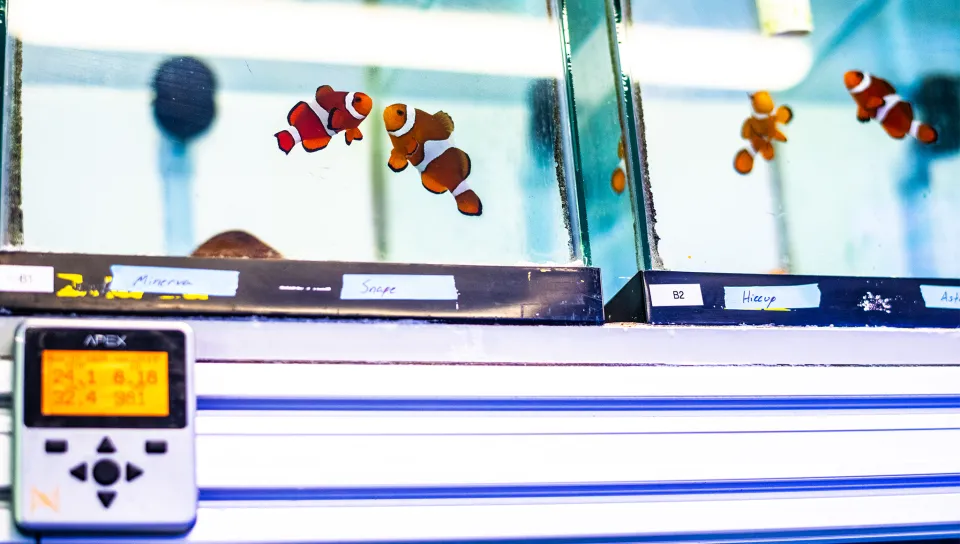
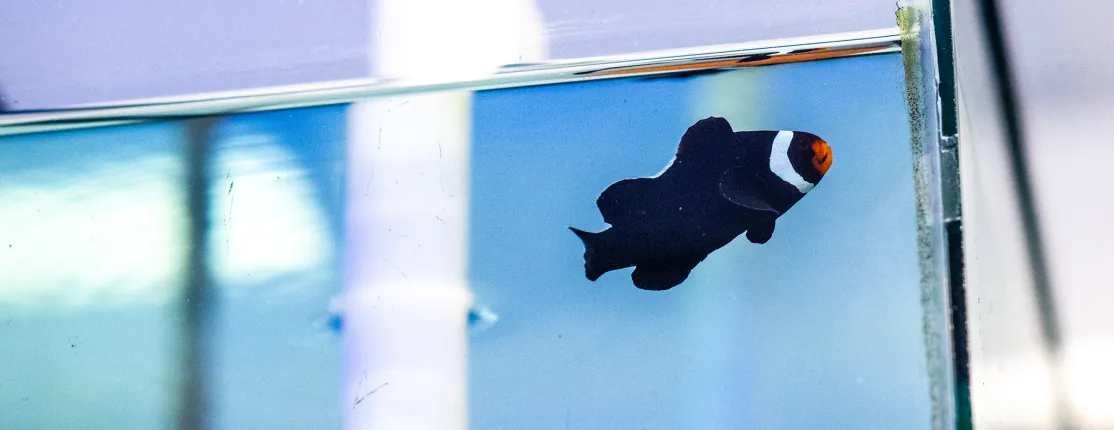
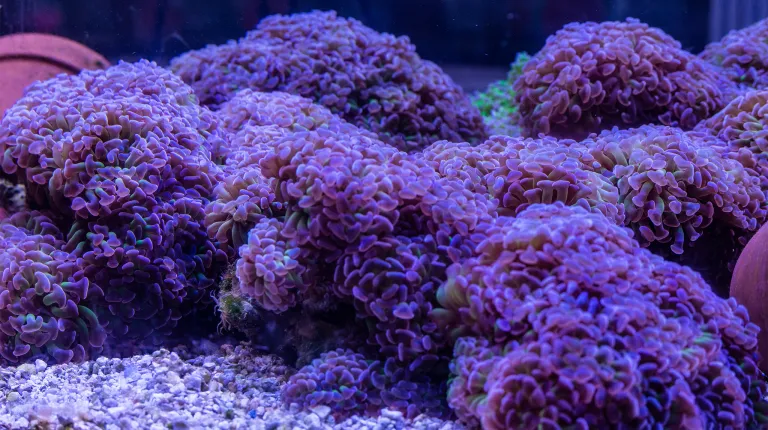
UNE’s Badge in Aquatic Animal Care
Anyone interested also has the opportunity to enroll in UNE’s Aquatic Animal Husbandry Badge to gain immersive, hands-on experience in aquatic care through work in the Ornamental Husbandry Lab and the Zebrafish Education and Research Facility. Offered through UNE’s digital badging program, this non-credit credential allows you to validate your skills and competencies in aquatic animal husbandry. Training covers essential protocols for housing, enrichment, and species-specific care, all in alignment with IACUC regulations. The experience culminates in a skills presentation, where you demonstrate mastery of husbandry techniques and showcase your applied knowledge in aquatic systems.
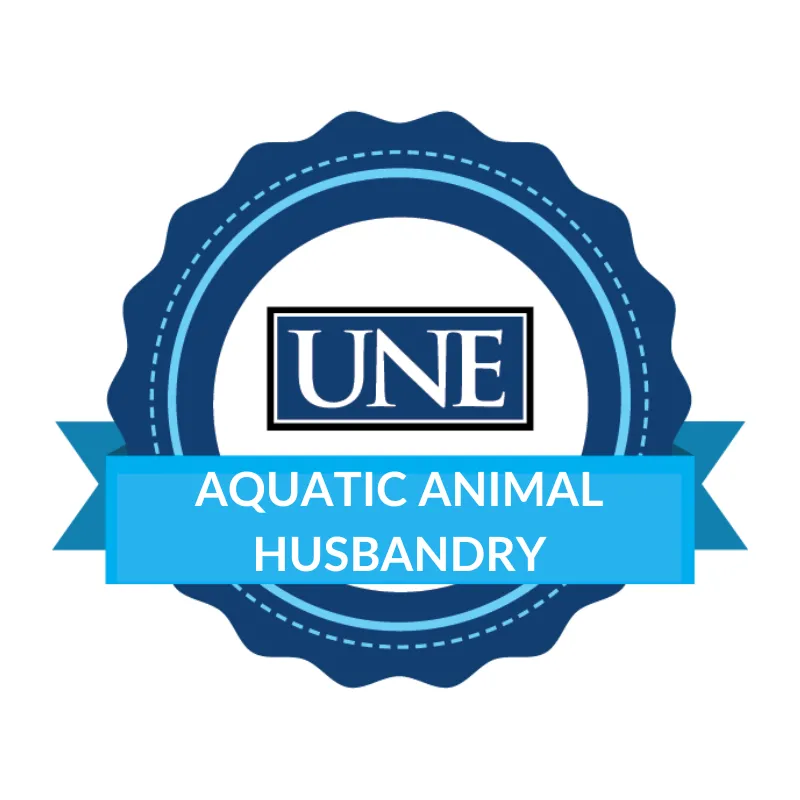
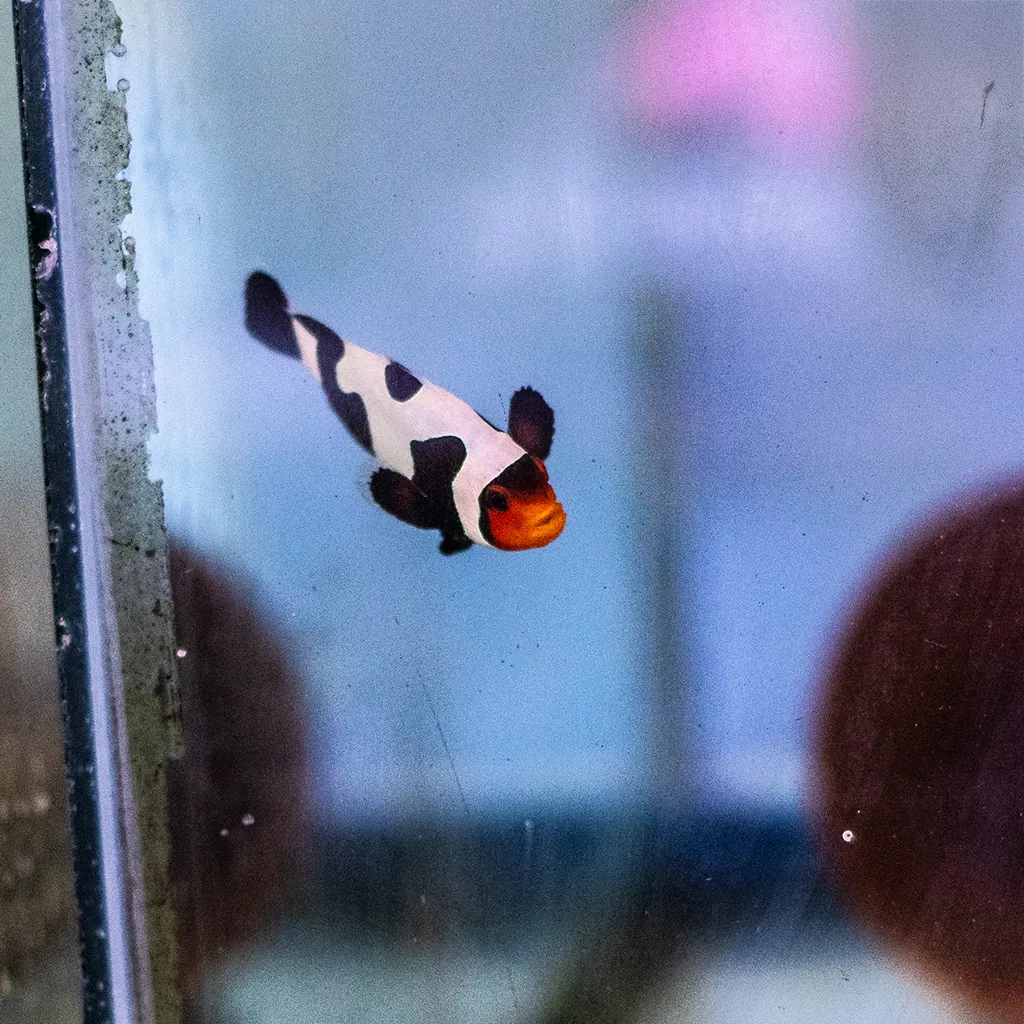
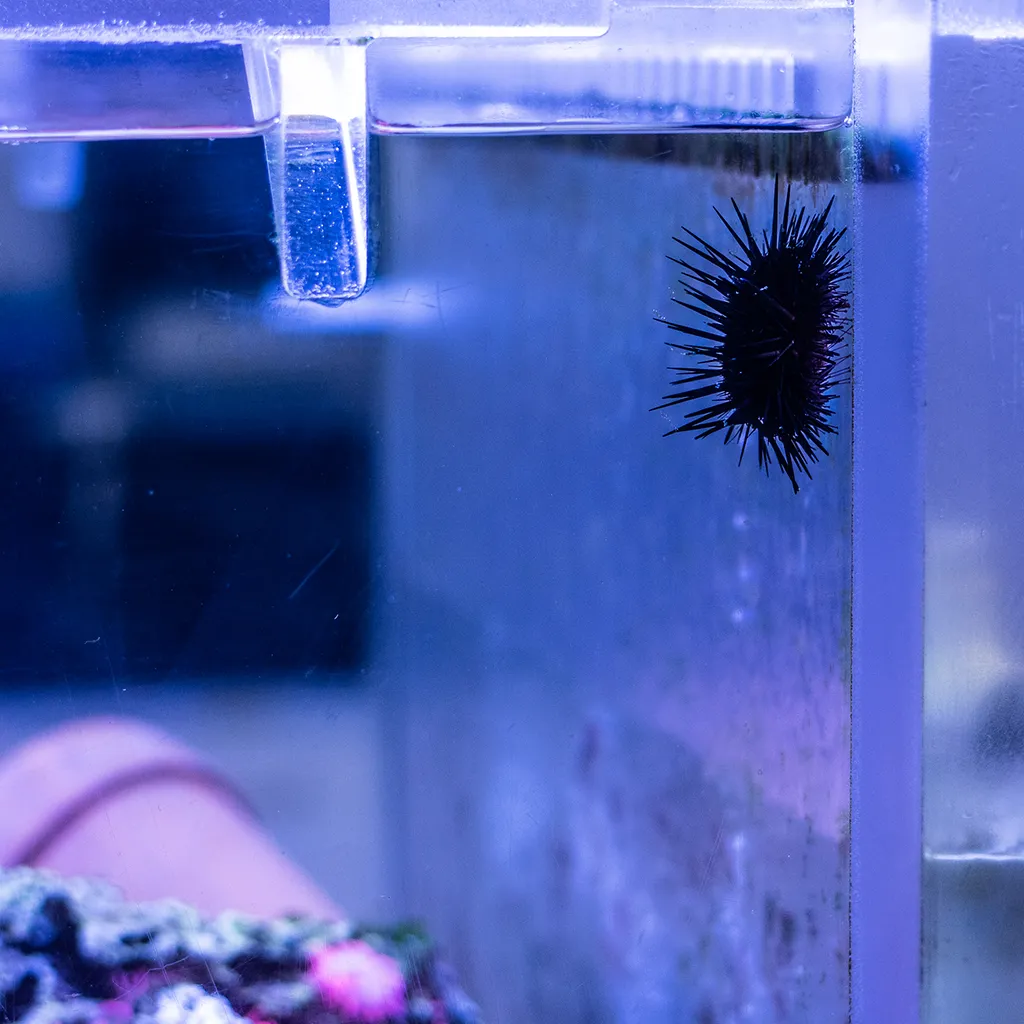
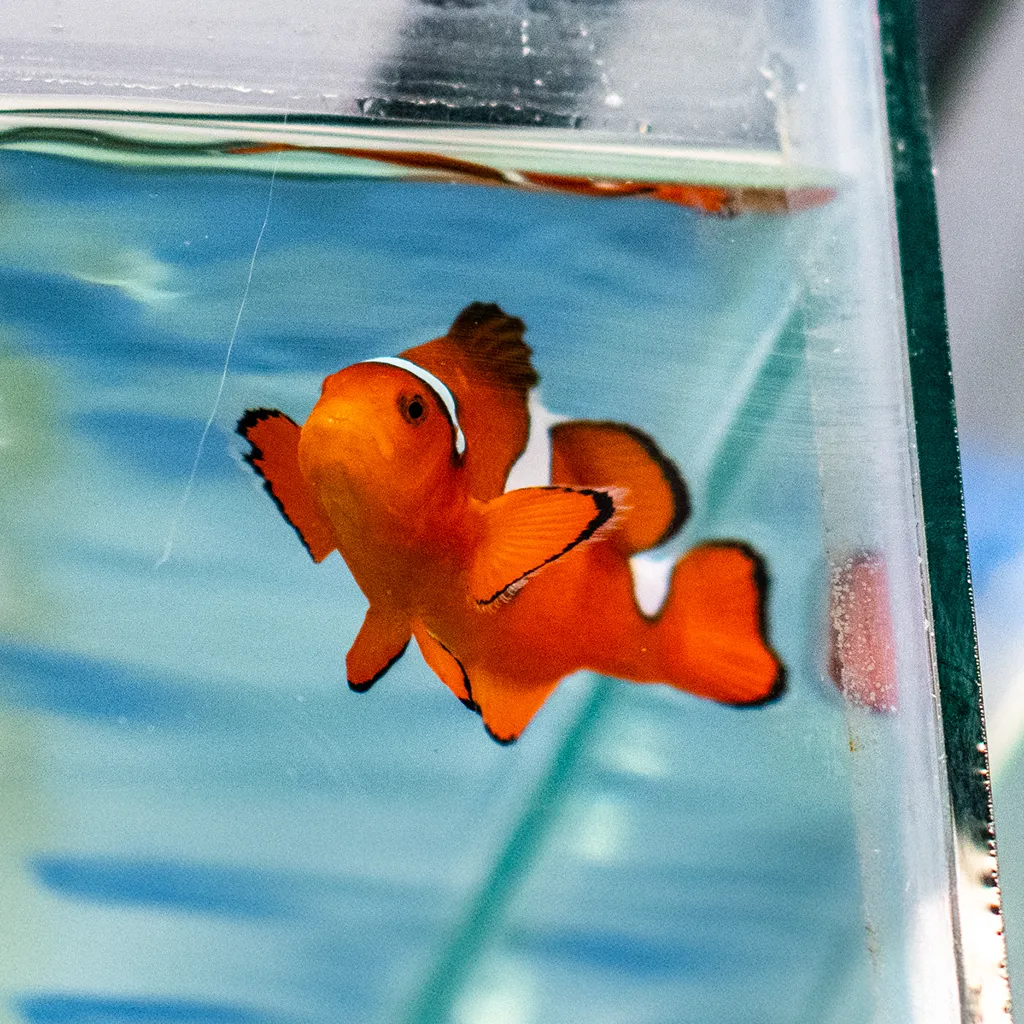
Contact
If you are interested in learning more about UNE’s OHL, visiting the facility, discovering ways to utilize the facility in your classroom, or exploring research opportunities, please contact Erin Ducharme, M.S., GMSC Vivarium Manager, at educharme1@une.edu.
